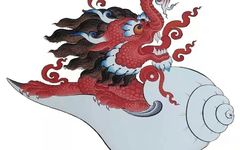

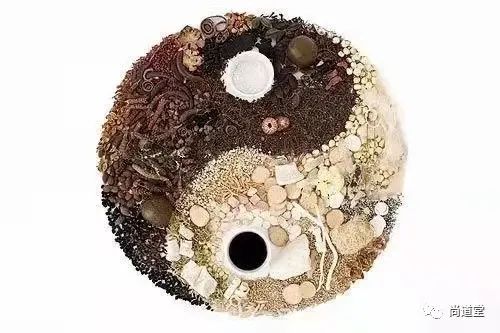

Taiji Luo Wanxiang

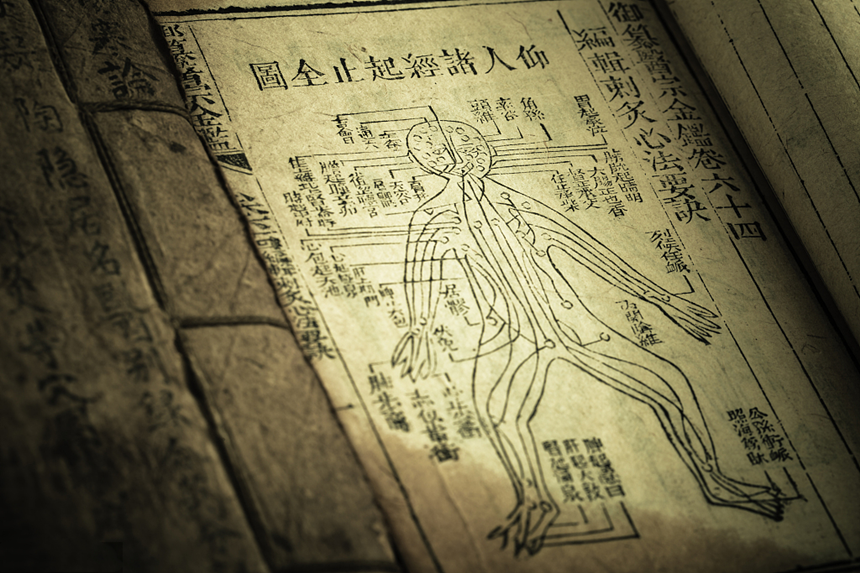
The Tang Dynasty was the most culturally brilliant period in Chinese history, especially during the reign of Emperor Taizong.
In this great era, the renowned physician Sun Simiao, while writing the preface to his monumental work Qianjin Yaofang (Essential Prescriptions Worth a Thousand Gold), clearly articulated the origins and transmission of the medical path.
Sun Simiao stated: “The Yellow Emperor received the mandate, created the Nine Needles, and, along with the alchemists Qibo and Leigong, thoroughly discussed the meridians, addressed inquiries, and meticulously examined the principles, thus forming the classic texts for future generations to rely upon and flourish.” … “During the Spring and Autumn period, there were the gentle physicians, and during the Warring States period, there was Bian Que; in the Han Dynasty, there were Zhang Zhongjing and Cang Gong; in Wei, there was Hua Tuo, all of whom explored the profound and subtle.”
Sun Simiao explained that the medical path originated with the Yellow Emperor, Qibo, and Leigong, and that the successors of this path included the gentle physicians of the Spring and Autumn period, Bian Que of the Warring States, and Zhang Zhongjing and Hua Tuo of the Han Dynasty.
This article will explore the following three points:
1. Traditional Chinese Medicine (TCM) originates from the medical path of the Yellow Emperor, which in turn comes from “the Supreme Deity.”
2. TCM is “Daoist Medicine.”
3. Ancient Chinese medicine was quite advanced.
TCM generally refers to the traditional medicine primarily created by the Han Chinese laboring people, thus also known as Han Medicine. TCM is in contrast to Western medicine. Before Western medicine was introduced to China, TCM was not commonly referred to as such and had unique and rich terminologies.
TCM embodies the experiences and theoretical knowledge of ancient Chinese people in their struggle against diseases, gradually forming and developing into a medical theoretical system under the guidance of primitive materialism and spontaneous dialectical thinking through long-term medical practice.
TCM is based on the theories of Yin-Yang and the Five Elements, viewing the human body as a unity of Qi (vital energy), form, and spirit. Through the four diagnostic methods of Wang (Observation), Wen (Listening), Wen (Inquiry), and Qie (Palpation), it seeks to explore the causes, nature, and location of diseases, analyze pathogenesis, and assess changes in the internal organs, meridians, Qi, blood, and body fluids, determining the balance of pathogenic and healthy factors, thereby arriving at a diagnosis, summarizing syndromes, and formulating treatment principles based on syndrome differentiation, employing methods such as sweating, vomiting, purging, harmonizing, warming, clearing, tonifying, and reducing, utilizing various treatment modalities including Chinese herbs, acupuncture, tuina (Chinese therapeutic massage), cupping, qigong, and dietary therapy to achieve a state of balance between Yin and Yang for recovery.
TCM originated in primitive society, and by the Spring and Autumn and Warring States periods, its theoretical framework had already taken shape, with the emergence of anatomy and medical specialization, and the adoption of the “Four Examinations.” Treatment methods included stone therapy, acupuncture, decoctions, moxibustion, guiding exercises, and incantations. Since ancient times, there has been a saying that “the medical path is interconnected.” This influence can be traced back to the Daoist texts of Huang-Lao, particularly the Huangdi Neijing (Yellow Emperor’s Inner Canon), which is one of the four classic texts of traditional Chinese medicine and the earliest medical classic in the treasure trove of Chinese medicine. It is also a monumental work studying human physiology, pathology, diagnostics, treatment principles, and pharmacology.
Theoretical foundations established in TCM include the theories of Yin-Yang and the Five Elements, pulse diagnosis, organ theory, meridian theory, etiology, pathogenesis, symptoms, diagnostic methods, treatment principles, and health preservation, with later developments in TCM and health preservation building upon the Daoist thoughts of the pre-Qin period, beginning to explain human physiology through Yin-Yang and the Five Elements, leading to the emergence of medical artisans, gold needles, and copper keys.
During the Eastern Han Dynasty, the famous physician Zhang Zhongjing had already recognized the “Eight Principles” (Yin-Yang, Interior-Exterior, Deficiency-Excess, Cold-Heat) and summarized the “Eight Methods.” Hua Tuo was renowned for his expertise in surgical procedures and anesthesia, and he created the health exercise “Five Animal Frolics.” In the Tang Dynasty, Sun Simiao summarized previous theories and experiences, collected over 5,000 prescriptions, and employed syndrome differentiation in treatment, earning the highest respect for his medical ethics, being revered as the “King of Medicine.”
After the Tang Dynasty, Chinese medical theories and texts were widely disseminated to Korea, Japan, Central Asia, and West Asia. During the Song Dynasty, the Song government established the Hanlin Medical Academy, and medical specialization approached completion, unifying acupuncture points that had been confused due to transcription errors, and publishing the Illustrated Canon. From the Jin and Yuan Dynasties onward, TCM began to decline. After the Ming and Qing Dynasties, the Warm Disease School and the Modern Prescription School gradually replaced the Classical Prescription School of TCM. The publication of Li Shizhen’s Bencao Gangmu (Compendium of Materia Medica) in the late Ming Dynasty marked the decline of pharmacology in TCM. During the same period, Mongolian and Tibetan medicine were influenced by TCM. In Korea, Dongyi medicine also saw significant development, exemplified by Heo Jun’s Dongyi Baoguan (Treasured Mirror of Eastern Medicine).
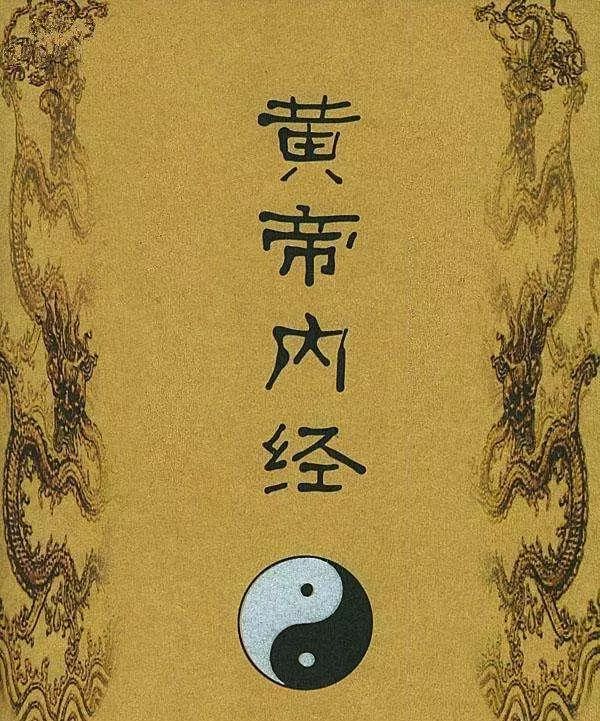
1. TCM originates from the medical path of the Yellow Emperor, which in turn comes from “the Supreme Deity.”
The Huangdi Neijing is recognized as the Bible by physicians throughout the ages, containing many chapters that describe the origins and transmission of the medical path:
The medical path originates from the Supreme Deity;
The order of transmission of the medical path: Supreme Deity → Ancestor Teacher → Qibo → Yellow Emperor → Leigong.
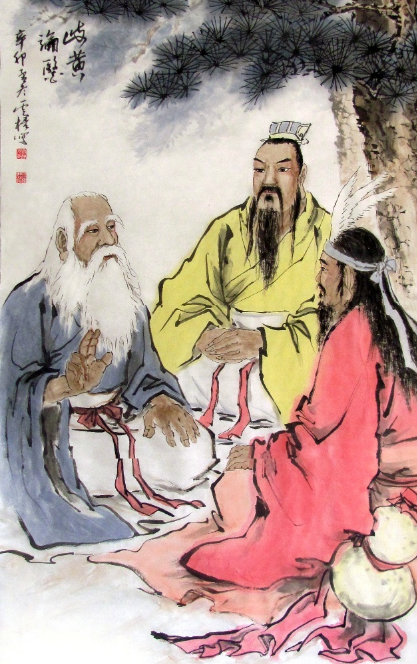
1. The medical path originates from the “Supreme Deity,” later transmitted to the Yellow Emperor.
01. The Supreme Deity transmitted the medical path to the Ancestor Teacher, who then transmitted it to Qibo.
Qibo was the teacher of the Yellow Emperor (the Yellow Emperor referred to him as the Celestial Teacher). Qibo often spoke of his teacher (the Ancestor Teacher), and Qibo’s teacher was passed down from the Supreme Deity.
Thus, Qibo said: “This is a secret of the Supreme Deity, transmitted by the Ancestor Teacher.”
The Supreme Deity is the emperor of the celestial realm (the ruler), and the scriptures do not elaborate on this, perhaps it is also a secret within a secret.
In the Suwen: Theory of the Six Organs, the Emperor said: “I have heard of the meetings of the sixes and nines; the Master speaks of the accumulation of Qi and fullness, I wish to know what Qi is? Please, Master, enlighten me.” Qibo replied: “This is a secret of the Supreme Deity, transmitted by the Ancestor Teacher.”
02. Qibo transmitted the medical path to the Yellow Emperor
The Huangdi Neijing is divided into two parts: Suwen and Ling Shu.
Most chapters (112 chapters) are the dialogues between the Yellow Emperor and the Celestial Teacher Qibo, while the later chapters of Suwen from Zhuo Zhi Jiao Lun to Jie Jing Wei Lun are the teachings of the Yellow Emperor to Leigong. There are also some texts where the Yellow Emperor inquired about medicine from Biao Gao (the Grand Teacher), Shao Yu, Shao Shi, and Gui Yu Qu, with a few texts lacking dialogue.
There is also the Huangdi Waijing, or Waijing Wei Yan (transmitted in the Qing Dynasty in the medical texts of Chen Shiduo), which is a record of medical inquiries answered by Qibo to other ministers of the Yellow Emperor such as Biao Gao, Gui Yu Qu, Leigong, Shao Shi, Rong Cheng, and Niao Shi.
In the Waijing Wei Yan: The Reversal of Yin and Yang, the Emperor said: “Indeed, it is recorded in the Waijing, to be transmitted to the ministers, so that they may all hear the ultimate truth and wander together in the boundless fields.”
Thus, the Huangdi Neijing is a dialogue between the Yellow Emperor and Qibo and other ministers, while the Huangdi Waijing is a dialogue between Qibo and other ministers of the Yellow Emperor, and the two are distinct.
03. The Yellow Emperor transmitted the medical path to Leigong, becoming the root of the transmission of TCM in later generations
The term “medical path” first appears in the Suwen: Zhuo Zhi Jiao Lun, where the Yellow Emperor asked Leigong if he could comprehend the medical path.
Leigong replied that he could recite it and understand some, but could not fully grasp it.
The Yellow Emperor then told Leigong that the medical path could “know the heavens above, the earth below, and human affairs in between,” and transmitted the medical path to Leigong.
The Emperor said: “Good. Do not fail in this; this is all about the Yin-Yang, the inner and outer, the male and female responding to each other, and the path knows the heavens above, the earth below, and human affairs in between, which can be long-lasting, to teach the masses, and there is no doubt about it. The medical path can be transmitted to future generations and can be a treasure.”
Leigong said: “Please accept the path, I will recite and understand it.”
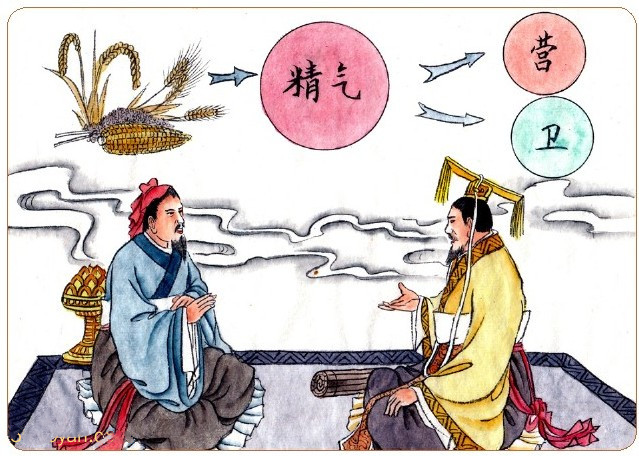
2. The transmission of the medical path.
01. Ritual: The Blood Oath of Arm Cutting
The Ling Shu: Prohibition of Consumption describes the ritual of the Yellow Emperor transmitting the medical path to Leigong (the transmission of the medical path), which is very solemn and must involve the blood oath of arm cutting:
① Three days of fasting.
② The righteous sun receives the oath.
③ Entering the fasting room, Leigong cuts his arm and swears blood as an oath.
④ The Yellow Emperor blesses: “Today is the righteous sun, blood oath to transmit the method; if anyone dares to go against this word, they will surely suffer.”
⑤ Leigong bows again and says: “I, the disciple, accept it.” The Yellow Emperor then holds his hand with the left and receives the text with the right, saying: “Be cautious, be cautious, I speak this for you.”
02. Secret Transmission Method: Oral Transmission and Heart Instruction
“Oral transmission and heart instruction” is a secret transmission method of Daoism, known only to a few outsiders, where the master transmits the “heart method” of the scriptures to the disciple.
The heart method is the most critical part; without knowing the heart method, even knowing the scriptures does not reveal how to use them.
Records of oral transmission and heart instruction in the Huangdi Neijing are as follows:
The Ling Shu: Oral Inquiry contains records of “oral transmission”:
The Yellow Emperor, in leisure, dismissed those around him and asked Qibo: “I have heard of the classic of the Nine Needles, discussing the reversal of Yin and Yang, the six classics are complete, I wish to inquire orally.”
Qibo avoided his seat and bowed, saying: “What a good question! This is what the Ancestor Teacher orally transmitted.”
The Ling Shu: Teacher Transmission contains records of “heart storage” (heart instruction):
The Yellow Emperor said: “I have heard from the Ancestor Teacher that there is something stored in the heart, not written in the prescriptions. I wish to hear and store it, then apply it to govern the people above and to care for my own body below, so that the people have no illness, and the upper and lower are harmonious, virtue flows down, and descendants have no worries, transmitted to future generations, without end. Can I hear it?”
03. The Transmission of the Medical Path in Later Generations
Wang Bo was a person from the early Tang Dynasty (the famous Tengwang Ge Xu is his work), and Cao Yuan was Wang Bo’s friend, living in Chang’an at that time.
According to the New Book of Tang: Biography of Wang Bo, Wang Bo befriended Cao Yuan and learned many secret medical techniques from him.
Thus, in the preface of the Huangdi Eighty-One Difficulties, the lineage of the transmission of the medical path is revealed:
Qibo → Yellow Emperor → Nine Masters → Yi Yin → Shang Tang → Six Masters → Jiang Taigong → Wen Wang → Nine Masters → Yi He → Six Masters → Bian Que → Nine Masters → Hua Tuo → Six Masters → Huang Gong → Cao Yuan.
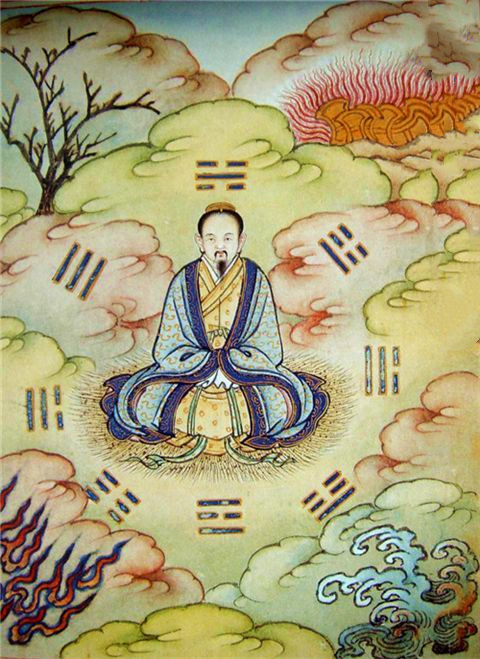
2. TCM is “Daoist Medicine.”
The Huangdi Neijing explains the principles of human medicine through “Yin-Yang and the Five Elements,” referring to it as the medical path, the Bible for treating diseases and preserving health.
The Dao De Jing by Laozi centers on the “Dao,” explaining the principles of the universe’s operation, serving as the Bible for Daoist cultivation.
Both together constitute the core of “Daoism.”
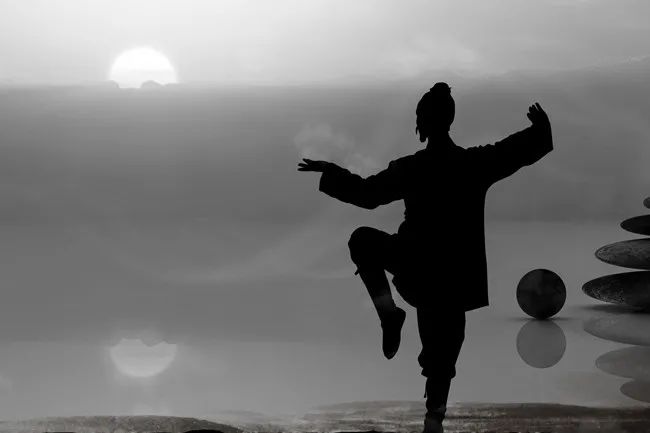
1. Treating Diseases, Preserving Health, Cultivating
According to Daoist hierarchy, the lower level is divination and feng shui (considered minor Dao), the middle level is treating diseases (considered medical Dao), and the upper level is cultivation (considered great Dao).
01. Treating Diseases
Most ancient cultivators also practiced medicine, as the principles of the medical path and cultivation are interconnected; moreover, practicing medicine not only helps the world and saves people but also accumulates virtue and does good.
Many famous ancient physicians were also cultivators, including Ge Hong, Tao Hongjing, Yang Xuanzhao, Yang Shangshan, Sun Simiao, Wang Bing, Wang Huaiyin, Liu Wanshu, Ma Danyang, Cui Jiayan, Li Shizhen, Sun Yikui, Zhang Jingyue, Fu Qingzhu, and Chen Shiduo.
Because cultivation allows for a deeper understanding of the principles of heaven, earth, and humanity, it has led to great medical achievements.
02. Preserving Health
Treating diseases addresses “existing illnesses,” while the more skilled (upper-level practitioners) treat “preventive health”; preserving health aims to prolong life and is a necessary stage for entering cultivation.
The Suwen: Theory of Ancient Heavenly Truth outlines two key points of Daoist health preservation:
Health preservation principle: Harmony of Yin and Yang, balance of form and spirit.
The human body consists of form (the tangible) and essence (the intangible); health preservation must balance both.
The principle of Daoism is Yin-Yang; Laozi said: “All things bear Yin and embrace Yang, and the Qi is harmonized.” (Dao De Jing, Chapter 42)
The human body is also composed of Yin and Yang, and health preservation aims to harmonize these elements.
Thus, the Suwen: Theory of Ancient Heavenly Truth states: “Those who understand the way follow Yin and Yang, harmonize with techniques and numbers, eat and drink in moderation, have regular routines, do not engage in excessive labor, thus can maintain both form and spirit, and live out their natural lifespan, reaching a hundred years before departing.”
Health preservation principle: Inner tranquility, clarity of mind, and minimal desires.
Daoism refers to the physical body as a “stinking skin bag,” which is acquired later; the essence of Daoist health preservation is to maintain the innate true Qi, emphasizing the cultivation of spirit (clarity of mind and minimal desires, valuing virtue and preserving truth).
Thus, the Suwen: Theory of Ancient Heavenly Truth states: “Tranquility and emptiness, true Qi follows; the spirit is internally guarded, how can illness arise?”
Therefore, one should be free of desires, have a peaceful heart, work without fatigue, and follow their natural inclinations, all achieving their wishes.
Thus, they enjoy their food, wear what they like, and delight in their customs, without envying one another, hence the people are called simple.
Therefore, desires cannot disturb their eyes, and evil cannot confuse their hearts; the wise and foolish are not afraid of material things, thus they align with the Dao.
Thus, those who can live to a hundred years without decline do so because their virtue is complete and not endangered.
03. Cultivation, Daoist cultivation to become a true person.
Daoist cultivation aims to become a true person, with the essence of cultivation being “refining essence into Qi, refining Qi into spirit, refining spirit back to emptiness, and refining emptiness to unite with the Dao.”
Through cultivation, the tangible “essence” is transformed into higher energy intangible substances (“Qi,” “spirit,” “emptiness”), which is to transform the “tangible” into the “intangible.”
The Suwen: Theory of Ancient Heavenly Truth specifically describes the Daoist cultivation of the true person as “grasping heaven and earth, mastering Yin and Yang, breathing in essence, guarding the spirit independently, with muscles unified, thus can endure beyond heaven and earth, without end, this is the way of life.”
Refining emptiness to unite with the Dao allows one to become a true person, who is one with the Dao.
Zhuangzi said: “The Dao is… the source of heaven and earth. … It existed before heaven and earth and does not age, enduring from ancient times without growing old.” (Nanhua Jing: Da Zong Shi)
Heaven and earth are born from the Dao, and the true person unites with the Dao, thus the true person can master heaven and earth, living longer than heaven and earth, achieving immortality.
Because the true person can unite with the Dao, they can cultivate into an “intangible” body; having an “intangible” body means they will not suffer from “tangible” ailments, thus they are free from illness and pain, not born and not transformed, and can “endure beyond heaven and earth, without end.”
It is said that the Yellow Emperor visited Guang Chengzi (a Daoist true person) at Kongtong Mountain, and Guang Chengzi imparted the Yin Fu Jing (a method of cultivation); later, the Yellow Emperor devoted himself to cultivation, achieving enlightenment at the age of 120, ascending to heaven on a dragon in broad daylight.
The Yellow Emperor is the first person in Chinese history to achieve Daoist enlightenment and ascend to heaven, thus revered as the ancestor of Daoism, alongside Laozi, known as “Huang Lao.”

2. “Divine Physicians” have “Divine Miracles.”
Many famous ancient physicians were cultivators, as Daoism has a complete system for treating diseases, preserving health, and cultivation principles, and through cultivation, they could develop extraordinary abilities, thus exhibiting many “divine miracles,” among which the most renowned “divine physicians” are Bian Que and Hua Tuo.
01. Bian Que’s “Art of Penetrating Walls” and Hua Tuo’s “Divine Vision”
Bian Que’s “Art of Penetrating Walls”:
In the Ming Dynasty, Sun Yikui discussed the concept of the three jiaos (three burners) being intangible, presenting Bian Que and Hua Tuo’s extraordinary abilities as evidence.
At that time, the medical community popularized Chen Wuze’s theory that “the three jiaos are the size of a palm.”
Sun Yikui countered this by citing historical records of Bian Que’s “Art of Penetrating Walls” (seeing a person’s organs through walls), questioning why Bian Que did not say the three jiaos are the size of a palm, but instead referred to them as “intangible Qi.”

Hua Tuo’s “Divine Vision”:
Sun Yikui also quoted He Yiyang (a celestial maiden) who said: “It is said that Hua Tuo has divine vision, placing a person naked in the sun, seeing their organs, thus creating diagrams for future reference, establishing treatment norms. During the Three Kingdoms period, many were killed; Hua Tuo’s medicine cannot be said to lack insight; how could the three jiaos be so small and yet not be recorded?”
Hua Tuo also possessed the ability to see through organs like Bian Que; during the turmoil of the Three Kingdoms, many were killed, and if the three jiaos were indeed the size of a palm, Hua Tuo would certainly have mentioned it and illustrated it in the Neizhao Tu (Internal Reflection Diagram).
Why did Hua Tuo, like Bian Que, refer to the three jiaos as intangible?
02. Bian Que and Hua Tuo’s “Surgical Procedures”
The Liezi (written by Liezi of the Warring States period, who was a Daoist true person) recorded Bian Que’s “Heart Exchange Technique,” where two living people (Gong Hu and Qi Ying) exchanged hearts.
However, after the heart exchange was successful, the two went to the wrong houses, Gong Hu returned to Qi Ying’s house, and Qi Ying returned to Gong Hu’s house, causing disputes and leading to the authorities, later Bian Que explained the circumstances.
The Records of the Three Kingdoms and the Book of the Later Han both record Hua Tuo’s miraculous abdominal surgery, first using the anesthetic “Mahuoshan” to put the patient to sleep, then performing an incision, cutting the intestines, removing a tumor (accumulation), then suturing and applying divine ointment.
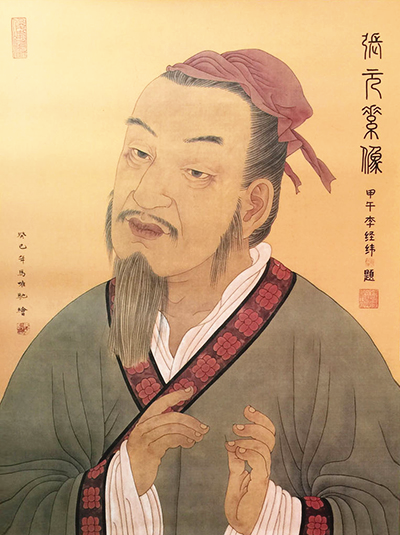
03. Zhang Yuanshu’s “Strange Dream”
During the Jin Dynasty, Zhang Yuanshu (Jie Gu Laoren) once told Zhang Jifu (Lan Quan Laoren) about a peculiar dream he had.
One night, Zhang Yuanshu dreamt that someone used an axe and chisel to open his heart’s orifice, then placed several scrolls inside, seeing the title was Neijing Zhuzhi Beiyao (Essential Prescriptions of the Inner Canon), then suddenly woke up, feeling a sharp pain in his heart, believing it to be an ominous sign, thus he did not dare to tell others.
However, from that moment on, Zhang Yuanshu’s understanding deepened (a kind of extraordinary ability, including his heart’s connection with the heavenly eye), fully comprehending the teachings of the Yellow Emperor, Qibo, and Bian Que, and he pioneered the concepts of the rising and falling of Chinese herbs and their pathways.
This was later revealed in the preface of Yixue Qiyuan written by Zhang Jifu for Zhang Yuanshu.
Many ancient great physicians exhibited “divine miracles” in treating diseases because TCM is a culture of divine transmission.
“Divine transmission culture” is primarily reflected in two aspects:
The tangible medical principles (texts) of the medical path are transmitted by the divine (the Supreme Deity);
The intangible connotations of the medical path reflect the “divine miracles” (extraordinary abilities) of cultivation.
Because TCM is “Daoist Medicine,” and Daoism consistently integrates the treatment of diseases, health preservation, and cultivation through the “Dao.”
Through Qibo and his Ancestor Teacher, the Yellow Emperor received the medical path from the Supreme Deity, and later received the Yin Fu Jing from Guang Chengzi and achieved enlightenment; this is the best evidence that TCM is a culture of divine transmission.
Modern TCM only inherits the superficial aspects (prescriptions and experiences), while regarding the essence of TCM (the medical path) as superstition, thus failing to demonstrate miraculous effects in treating diseases.
Even more so, modern TCM has abandoned the established medical path (the Huangdi Neijing), yet reveres the research methods of modern Western medicine as the standard, leading to the loss of the medical path. (The original text has been abridged)
Repost with joy, the merit is immeasurable
Anything negative should not be responded to. Responding will entangle you with it, and entanglement will lead to loss. As long as the heart does not respond, all its evil thoughts will return along the same path.
——【Elegant Phrase】
Let wisdom and compassion never cease!
